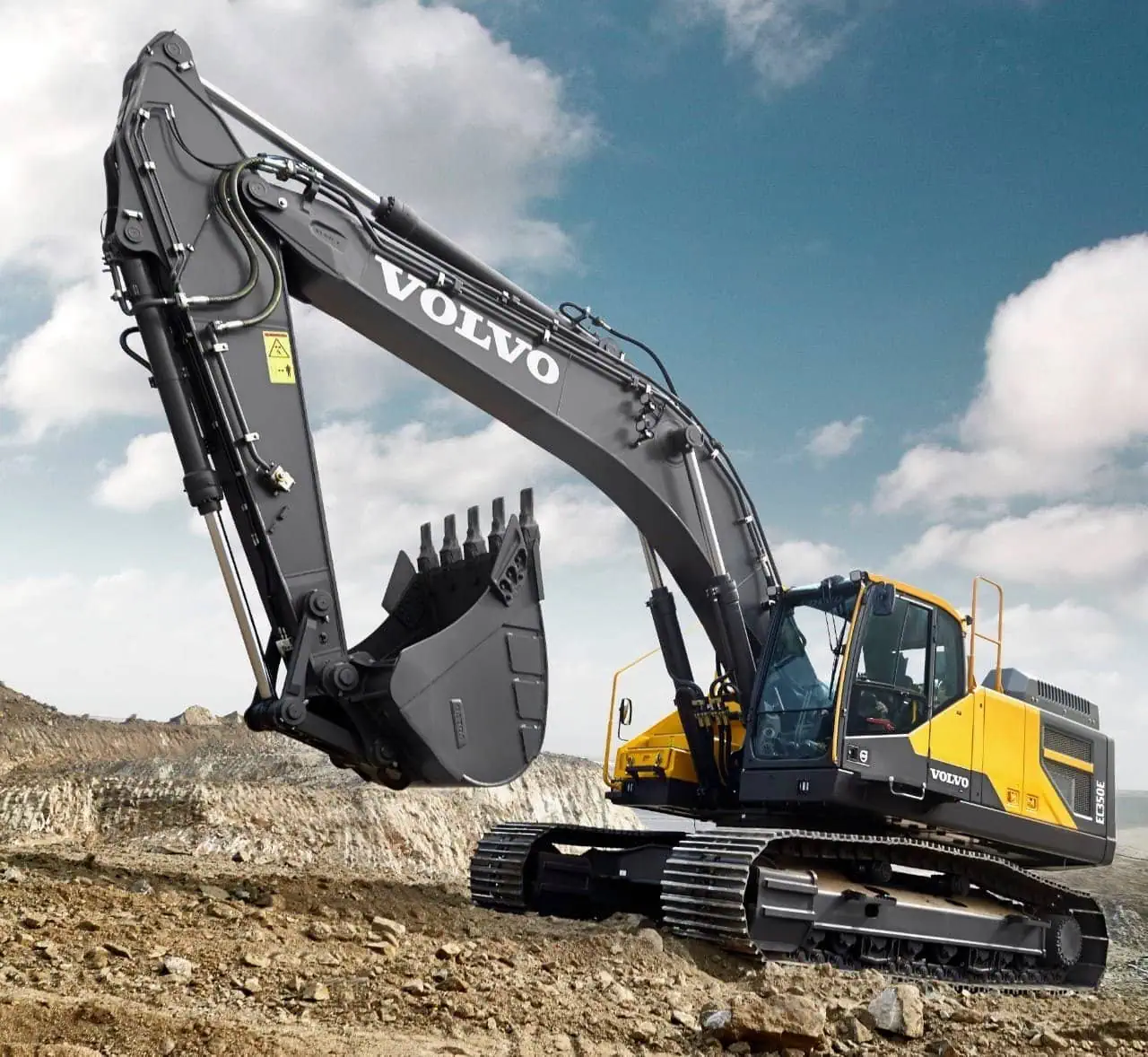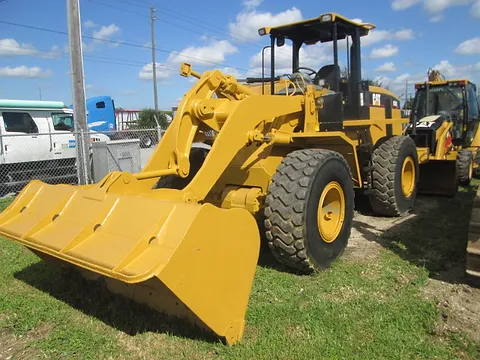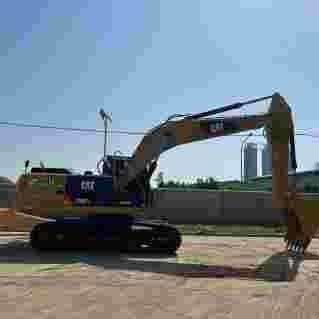Trying to decide between a crawler excavator and a wheeled excavator for your next construction job? A lot of people don’t know what they need or why. Understanding a simple stability versus mobility versus cost difference could save you a lot of hassle once you have the machine on-site and are trying to get the job done safely and efficiently.
When selecting between a crawler excavator and a wheeled excavator, the decision largely depends on the type of terrain and project requirements. Crawler excavators are ideal for rough, uneven ground, offering superior stability and traction. On the other hand, wheeled excavators provide faster mobility, making them perfect for urban environments with paved roads. By understanding these critical differences, you can choose the excavator that best suits your project, balancing both performance and cost-effectiveness. Keep reading to find out which one is the right fit for your construction needs!
Let’s dive more into the specific features and advantages of both to help you make that decision.

جدول المحتويات
تبديلWhat is a Crawler Excavator?
A crawler excavator is a big, heavy-duty construction machine made for digging, lifting, and material handling work. It travels on continuous tracks instead of wheels, making it great for working in difficult, irregular, or soft
terrain. The design of a crawler excavator allows for excellent stability, high lifting capacity, and better traction than a wheeled machine, especially when traveling or working on rough terrains.
Key Features of Crawler Excavators:
- Tracks:Continuous tracks distribute a machine’s weight over a larger contact area, allowing for better weight distribution, more traction, and the ability to work on uneven ground.
- Heavy Duty:Built to do the biggest work for the biggest construction projects and on the biggest mines.
- Off Road: Great on steep and muddy terrains where it might be hard for a four- or six-wheeled machine to navigate the site.
| Feature | Crawler Excavator | Function |
| Tracks | Continuous tracks for weight distribution and traction | Provides superior stability on soft, muddy, or rocky ground |
| Lifting Capacity | Higher lifting capacity compared to wheeled machines | Ideal for heavy-duty digging, material handling, and lifting |
| Terrain Adaptability | Excellent for rough, off-road conditions | Suitable for rugged terrains like construction sites, mines, and quarries |
| Speed | Slower travel on paved roads, but stable on rough terrains | Best for tasks requiring stability over speed |
Advantages of Crawler Excavators:
- Stability on Rough Terrain: The machine’s tracks ensure it remains stable when working on sloped or uneven surfaces.
- Superior Traction: Tracks offer better traction on soft or muddy terrain, making the machine ideal for off-road construction or mining projects.
- Durability: The crawler excavator is designed to withstand heavy-duty use in harsh conditions, making it suitable for long-term, continuous operations.
What is a Wheeled Excavator?
حفارة ذات عجلات – Another different design for your construction equipment that runs on wheels rather than tracks. Because it runs on wheels, it travels more quickly over roads and those wheels disassemble you at the job site quicker than tracks for urban, town, and small job situations. Wheeled machines are faster to get from Point A to Point B and more mobile than a crawler. The downside is less stability and traction in rough or soft terrain.
Key Features of Wheeled Excavators:
- Wheels: Provide faster movement over paved surfaces compared to continuous tracks.
- Compact Design: Smaller and more agile, making them ideal for urban or confined spaces.
- براعة: Often equipped with quick couplers to easily change attachments, such as buckets or grapples.
| Feature | حفارة ذات عجلات | Function |
| Wheels | Wheels for fast travel on hard, paved surfaces | Great for roadwork, urban construction, and site-to-site transport |
| Compact Design | Smaller and easier to maneuver compared to crawler excavators | Perfect for use in urban environments with tight spaces |
| Speed | Faster on smooth roads | Ideal for projects requiring quick transit between job sites |
| Ease of Transport | No need for flatbed trucks, travels on its own wheels | Makes transportation between job sites easier and cheaper |
Advantages of Wheeled Excavators:
- Mobility and speed:Travel quickly on a road from one job to the next job. Great for urban where mobility and speed are most important.
- Lower operating costs: Generally, wheeled machines cost less to service and operate. Because they travel on a road, they don’t tear up the tracks, which lessens maintenance costs. Plus, they’re easier on fuel for short hauls on the road than a tracked machine.
- Versatile:The quick-change coupler allows you to use buckets and grapples just like you use on a big track crawler in the trenching, lifting, or demolition business.

Key Differences Between Crawler and Wheeled Excavators
To help you get a better understanding of the differences between a crawler versus a wheeled machine, here is a big comparison chart to consider:
| Feature | Crawler Excavator | حفارة ذات عجلات |
| Mobility | Best for uneven, off-road surfaces | Best for smooth, paved roads and faster movement |
| Stability & Traction | High stability and traction on soft, uneven terrain | Lower stability on rough surfaces, but faster on hard terrain |
| Speed | Slower on roads, designed for stability on rough ground | Faster on paved surfaces, less stable on uneven ground |
| Cost | Higher initial cost, but more durable and capable for heavy-duty tasks | Lower upfront cost, but may require more frequent repairs on rough terrain |
| Maintenance | Requires more maintenance, especially for tracks | Less frequent maintenance, but tires may need replacing |
| Fuel Efficiency | More fuel-efficient in rough conditions | Less fuel-efficient on rough terrain but better on smooth roads |
Crawler Excavators vs. Wheeled Excavators: Which One Is More Cost-Effective?
Choosing between a crawler excavator and a wheeled excavator often depends on the budget and the nature of the work. Here is a breakdown of the cost-effectiveness based on purchase price, operating costs, and maintenance:
Initial Purchase Cost:
- Crawler Excavators tend to have a higher initial purchase cost due to their heavy-duty design and enhanced performance features. However, they are built to handle larger projects and tougher conditions, justifying the higher investment.
- Wheeled Excavators, on the other hand, are more affordable up front, making them ideal for smaller projects or for businesses that need a machine that can move quickly between job sites.
Operating Costs:
Crawler Excavators are better suited for operating on rougher terrain. However, this can also mean additional wear on the tracks and other components. Due to their working on rougher terrain, the fuel use for these machines is less. However, the operating costs may be higher due to the cost of the crawler undercarriage replacement. Wheeled Excavators are better for long transport and when you need to get a large hole dug as fast as possible. The trade-off can be faster travel and bad traction if the ground is slippery or sandy.
Maintenance and Longevity:
- Crawler Excavators will require more maintenance, especially for tracks and undercarriage components. However, many of these machines are built to last in some very harsh conditions.
- Wheeled Excavators tend to require less maintenance, but the wheels may wear out quicker, particularly if ground conditions are rough or if a machine has been used extensively off-road.
| Cost Factor | Crawler Excavator | حفارة ذات عجلات |
| Initial Cost | Higher upfront cost, suited for large-scale projects | Lower initial cost, suited for smaller or temporary projects |
| Fuel Efficiency | More efficient in rough terrain, but less efficient on paved roads | Better efficiency on smooth roads, but not ideal for rough terrain |
| Maintenance | More frequent maintenance required, especially for tracks | Less frequent maintenance but regular tire replacements |
| Depreciation | Slower depreciation, ideal for long-term heavy-duty projects | Faster depreciation, best for short-term or urban work |

Advantages of Crawler Excavators for Heavy-Duty Work
For big jobs running over extended periods, people tend to like Crawler Excavators. They’re set up to work on a bigger job. They ride smoother, they lift the best, and they seem to have the most traction if they get on a hill or in a bind.
Heavy-Duty Performance:
When you get to those really tight spots or when you have that big job you need to finish, crawlers can do just about anything you need. They can dig deep, lift up big stuff with their big arms, and even work in some mine operations or quarries. They have the lifting capacity with their big frame to really handle jobs other machines can’t do.
Rugged Terrain Capability:
Where working on a job, or in some mud, some rocky hillsides, in a trench, you need the traction on a crawler to get the job done, and you can do it safely and efficiently.
| Task Type | Crawler Excavator | Best Use Case |
| Heavy Lifting | Excellent lifting capacity | Ideal for construction sites requiring heavy material handling |
| Steep or Rocky Terrain | Tracks provide traction on steep slopes and rocky surfaces | Perfect for mining, quarrying, and mountainous work |
| Rough, Muddy Terrain | Tracks excel in wet, muddy, or sandy environments | Great for wetland construction, dam building, and flood management |

When is a Wheeled Excavator the Better Choice?
The best application for wheeled excavators is on hard, relatively smooth surfaces, such as urban jobsites or work that is performed on and around concrete and asphalt. They can travel at faster speeds than crawler excavators, making them an excellent choice when moving from one location to the next. Wherever you’re working, with a wheeled excavator, you’re there – no operator needs to get out of the cab and walk over to the job site. Here are a few situations when a wheeled excavator is your best option:
Urban and Roadwork
Wheeled excavators are fast and mobile. Need to change work sites frequently? Have to travel long distances? A wheeled excavator is the ideal machine in these situations. When work is next to a road or you’re on the road, speed counts. Speed up production. Get more work done. In most cases, the best machine for off-road use is a track-mounted, crawler excavator.
Key Benefits:
- Urban Construction: When it comes to working in town or anywhere you don’t want to pick up and move a big machine at the end of the day, a wheeled machine is perfect. You can drive a wheeled excavator on the road to the next job site. Wheeled machines can maneuver and work within narrow streets for projects such as utility installations. They also work well in cities. These machines belong on a street in town.
- Road Maintenance: If you need speed of mobilization, then a wheeled excavator is the best tool for the job. If you’re next to the road, you want a wheeled machine. Seddons, operating in the Inland Empire in Southern California, purchased a used Volvo EW180C wheeled excavator to maintain the roads they constructed and serviced, including service work on a state highway.
Mobility and Speed
One of the big advantages of a wheeled excavator – no matter who puts it out – is speed. It runs faster on hard surfaces. A tracked excavator works better off road, and a wheeled excavator works better when you can run it fast on a paved road. That’s why it’s great in urban areas. You can run to multiple places on a fast paved road.
- Crawler Excavators: These machines are typically slower on roads due to their tracks, which are designed for traction rather than speed.
- Wheeled Excavators: With rubber tires, these machines can move at much higher speeds, reducing travel time between work sites and increasing overall productivity.
Lower Operating Costs
for short-term, temporary projects or those based in urban areas, a wheeled excavator would be the more cost-effective machine. Its fuel consumption, maintenance cost, and operational cost will be significantly lower than the tracked machine. Because it rolls on rubber tires, it is easier on finished, compacted surfaces and city streets, which means less maintenance cost than are associated with tracked machines.
- Fuel Efficiency: Wheeled excavators consume less fuel when traveling on roads, as they don’t require the constant power needed to operate tracks, making them an ideal choice for road-based work.
- Maintenance: Wheeled excavators require less frequent servicing and repair, especially in urban environments where road conditions are less harsh than off-road terrain.
| Scenario | حفارة ذات عجلات | Reason to Choose |
| Urban Construction | Faster and more maneuverable in tight spaces | Ideal for city projects where speed and mobility are crucial to meeting deadlines. |
| Road Maintenance | Can travel quickly between construction zones | Useful for projects that involve maintaining multiple locations, especially in busy city environments. |
| Temporary Projects | Lower initial investment and maintenance costs | Cost-effective for short-term jobs, rental fleets, or projects with tight budgets. |
| Public Works Projects | Less wear on paved surfaces, reducing road damage | Suitable for government or municipal projects that aim to minimize road damage while maintaining high efficiency. |

Crawler Excavators: Essential Attachments for Maximum Productivity
By adding attachments to your crawler excavator, you can make it more versatile and useful. Rather than just digging, you can turn your crawler into heavy equipment that performs specific, task-related functions. Attachments can make your excavator perform like a mining shovel one day and remove concrete buildings the next. It’s the versatility of the utility that makes crawler excavators valuable to construction, mining, forestry, and demolition. Here are the essential attachments that can turn your basic crawler excavator into an immensely valuable tool for making money.
Hydraulic Breaker
The hydraulic breaker is an essential attachment for crawler excavators when doing demolition or heavy-duty construction. This attachment is engineered for breaking rock, concrete, and asphalt. It allows an operator to take down a building quickly, demolish a road, or play at being a miner in a rock quarry.
Main Advantages:
- Efficient in breaking hard surfaces such as concrete and rock
- Reduces the need for manual labor or explosive demolition methods
- Can be used in confined or hard-to-reach spaces, which are common on construction sites
- Available in various sizes for different levels of power, from light demolition to heavy-duty rock breaking
| Attachment | Function | Best Use Case |
| Hydraulic Breaker | Breaks through rock, concrete, and asphalt | Demolition, quarrying, and road construction |
| Bucket | Excavation, trenching, and material handling | General digging, trenching, and material movement |
| Grapple | Handling large debris like logs and rocks | Forestry, scrap handling, and material transport |
Additional Attachments to Consider
While hydraulic breakers, buckets, and grapples are the big three when it comes to attachments for crawler excavators, there are lots more. And they all bring a unique utility to your machine.
- Augers: For drilling holes in the ground, perfect for creating foundations or installing posts.
- Rippers: Ideal for breaking up compacted ground, frozen soil, or hard rock.
- Thumbs: Often used alongside a bucket or grapple to enhance material handling by providing better control over large, heavy objects.
| Attachment | Function | Best Use Case |
| Hydraulic Breaker | Breaks through rock, concrete, and asphalt | Demolition, quarrying, and road construction |
| Bucket | Excavation, trenching, and material handling | General digging, trenching, and material movement |
| Grapple | Handling large debris like logs and rocks | Forestry, scrap handling, and material transport |
| Auger | Drilling holes for posts and foundations | Foundation work, post installation |
| Ripper | Breaking hard, compacted surfaces | Mining, breaking through frozen ground |
| Thumb | Enhances material handling by providing grip | General material handling, scrap removal |
خاتمة
In conclusion, when it comes to crawler excavators versus wheeled excavators, there are good reasons for both. They have different strengths which you can use to your advantage, depending on the demands of your particular project. The advantages of a crawler excavator include greater stability and performance off the road. If you primarily work in rough ground, soft ground, or off-road conditions, then a crawler excavator is the way to go. The advantages of a wheeled excavator include speed and mobility. So, if you work in an urban environment or if your projects have to jump from site to site and need to change locations quickly, a wheeled excavator is often a better choice.
By weighing the benefits of each type of machine, you can decide which is more efficient, which saves you money, and, most importantly, which is safer for your workers and the people around your job site.
Follow us on :YouTube.










